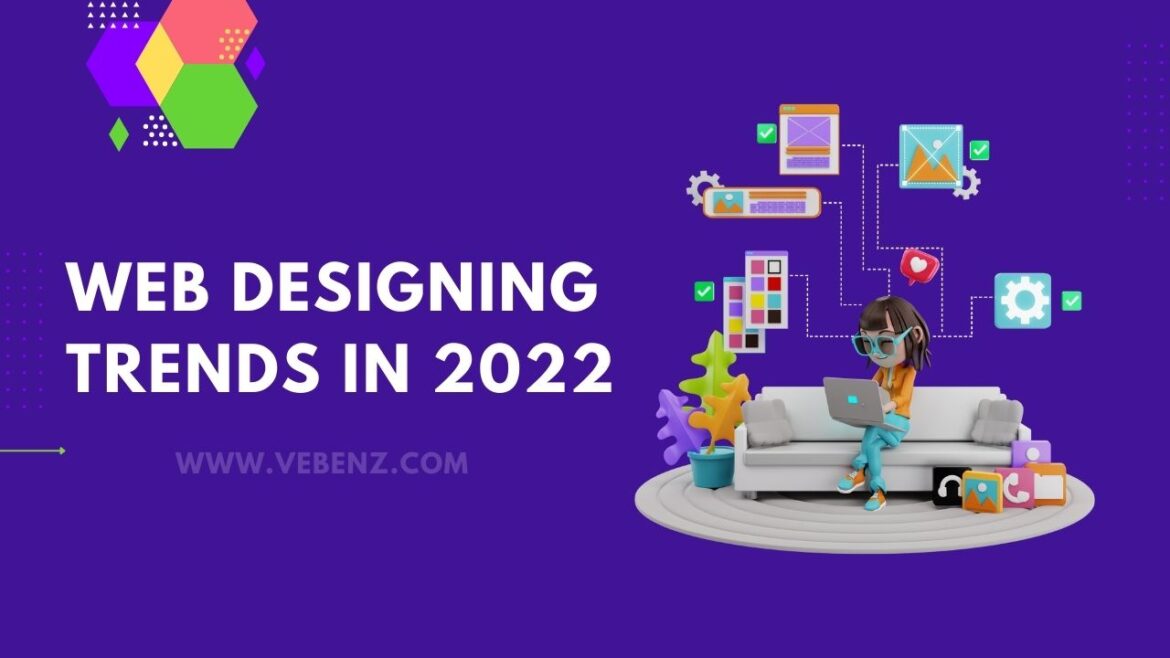The web has changed a lot since its inception in the 90s. In fact, some would argue that it’s changed more than any other technology in history. The internet is constantly changing and evolving, a natural part of its development as a whole.
Web Designing Trends 2022
For example, we now have websites that can load faster (and be more user-friendly) than ever before thanks to the introduction of HTML5; there are also new features being developed every day that will help us better relate to our users while they’re visiting our website! Even though these changes are happening at an exponential rate (1 billion websites were created last year alone), there are still some trends that stand out from all this chaos:
Learn From The Past
The past can tell you a lot about the present and future. For instance, in 2015, you might have noticed that there was more emphasis on mobile-first design than ever before—but what does that mean for web design?
In 2022, we will see even more emphasis on responsive sites and single-page apps. When it comes down to it: What does this mean for web designers?
For starters, we’ll see fewer sites being built with multiple pages per page or section per section (like Google Analytics). Instead of having lots of pages with content on each one of them (or just one with tons), we’ll probably see more focus on clean navigation systems where users can easily find their way around without much hassle or confusion from clunky navigation menus/links that don’t work as well anymore due to bad typography choices made years ago by designers who didn’t know any better back then!
Fragmentation
Fragmentation is a process of dividing a large network into smaller subnetworks. The goal of fragmentation is to increase the security, speed, reliability, and scalability of your network.
Fragmentation can be beneficial in many ways:
- It increases the speed of your network by allowing you to divide it into smaller segments that can communicate more quickly with each other (and therefore with other parts of the world). This allows you to have more bandwidth available for users at any given time without having to increase their connection speeds or add additional routers/switches – which can be expensive if done improperly!
- Fragmentation also improves security because when each part has its own IP address then there’s less risk that someone could hack into one piece without affecting others too much (or at all). Furthermore, it means that hackers won’t be able to get access across multiple computer networks simultaneously making them harder targets than ever before!
Web Accessibility
Web accessibility is a legal requirement. It’s not just for people with disabilities, either; it’s a business requirement and an ethical one.
Accessibility is about making sure that every member of your audience can access your web page—regardless of their disability or ability to read the text at all. As such, it should be included in all plans for website redesigns and maintenance projects from now on!
More Visual Features
Visual elements are more important than ever. People like to share images, and they’re also more likely to remember an image they see as opposed to reading text.
Visuals are also easier for people with disabilities or cognitive challenges to understand and process, which means that if you design a website or app for the visually impaired, you should consider adding visual features such as icons and images where appropriate.
AI (Artificial Intelligence) and Chatbots
The next big thing in digital design is the use of AI. Not only can it be used to automate tasks, but it can also be used to create chatbots and virtual assistants. These tools will soon take over many aspects of our daily lives, including online shopping, customer service interactions, and more!
It’s time to expand your imagination.
There is a saying that creativity is the most important thing in design. It’s true, but it’s also easier said than done. The more you can think outside of your box, the better—and this goes for both new ideas and new ways of doing things as well.
One way you can expand your imagination is by learning about other fields of study or professions outside of graphic design: architecture, fashion design, web development…the list goes on! It may seem like an obvious choice at first glance but there are many incredible resources out there if you’re willing to look around (or ask friends).
Conclusion
The Internet is changing rapidly, and we’re seeing more examples of this every year. We know that web design trends are always evolving, but there are some things that will never change: your audience and their needs.



